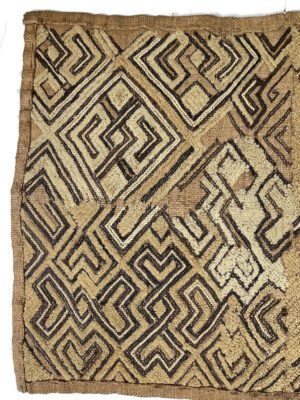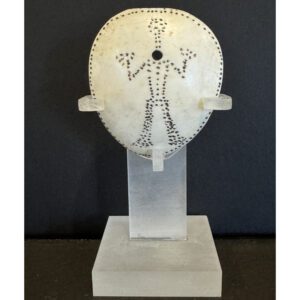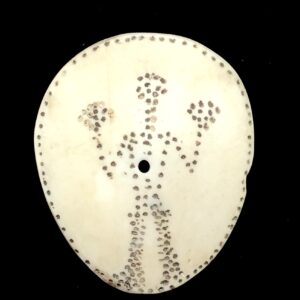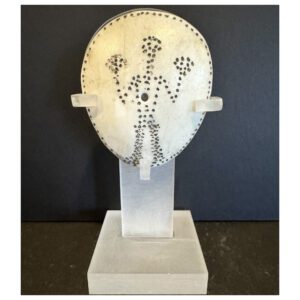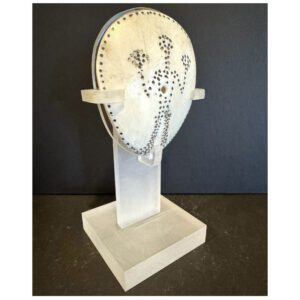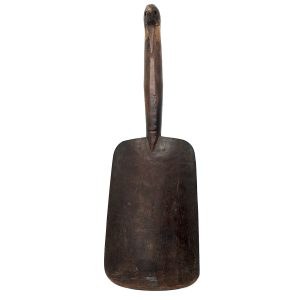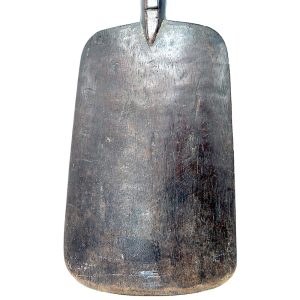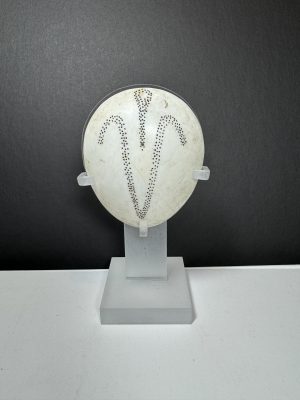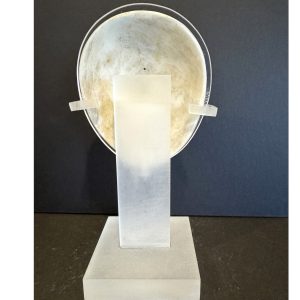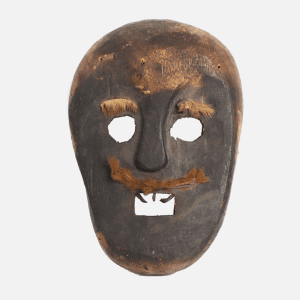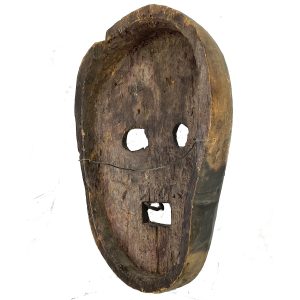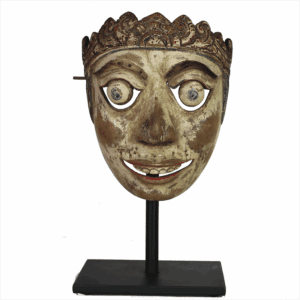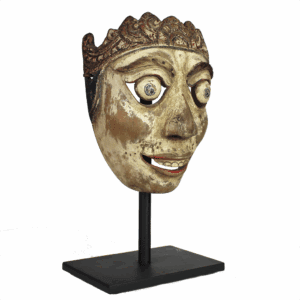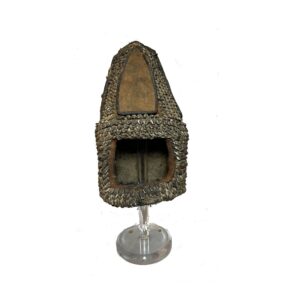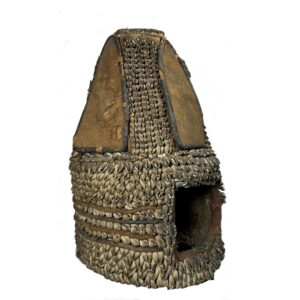Showing 25–32 of 32 results
-
Sale!


$95.00 Original price was: $95.00.$75.00Current price is: $75.00.
H: 18″ W: 18″ | FREE SHIPPING IN CONTINENTAL US!
Woven from strands of raffia palm leaves, this traditional vintage bordered square Kuba cloth from the Democratic Republic of the Congo was made using vegetable dye and is embellished with sophisticated embroidered, applique and patchwork linear designs.
-
Sale!


$295.00 Original price was: $295.00.$260.00Current price is: $260.00.
H: 4.6″ W:2.5 ” D: 2.12 ” | FREE SHIPPING WITHIN CONTINENTAL U.S.
Made by the Naga, tribal ethnic groups in India, conch shell ear covers were worn by warriors attached to pierced ears through a hole in the shell. Stippled abstract images of standing male with raised arms as status sign, mounted on Lucite base and is a fascinating piece of cultural art.
-
Sale!


$295.00 Original price was: $295.00.$260.00Current price is: $260.00.
H: 4.6″ W:2.5 ” D: 2.12 ” | FREE SHIPPING WITHIN CONTINENTAL U.S.
Made by the Naga, tribal ethnic groups in India, shell ear covers like this with stippled abstract image of standing male with raised arms were worn by warriors as status symbols.
-


$115.00
This vintage Indonesian rice paddle/spoon was crafted from local wood by a Lombok craftsman and is a fine example of the cultural art of the Sasak people who number three million and comprise about 80% of its population. As animism farmers for two millennia, they lived in houses surrounding religious compounds where they held religious…
-
Sale!


$325.00 Original price was: $325.00.$285.00Current price is: $285.00.
H: 5.25″ W:3.75 ” D: 2 ” | FREE SHIPPING WITHIN CONTINENTAL U.S.
Made by the Naga, a collection of tribal groups in India with a past headhunting tradition, conch shell ear covers are worn by warriors. This has a stippled image of a buffalo’s neck and head inside V-shaped horns, a symbol of wealth, prosperity. On Lucite base, they are unique cultural art.
-
Sale!


$495.00 Original price was: $495.00.$325.00Current price is: $325.00.
H: 12.5″ W: 8.625″ D: 2.75″ | FREE SHIPPING WITHIN CONTINENTAL U.S.
Deeply set cut-out eyes and mouths are traditional for West Timor ancestor masks as are few, none or menacing teeth. They are rare and often have hair on animal hides on the upper lip, brows and head. Often looking threatening with stark features, their black color, teeth and often lack of balance scare off malevolent and evil spirits. Storing them in the rafters above the house hearth accounts for their smokey black color. Timor Ancestor masks have an earthy expressive presence and a raw spirit.
Timor’s religion has been described by Barbier as ritual exchanges between persons and social groups with their ancestors and fertility spirits. Timorese believe they can be upset by wicked forces, sickness, infertility and other forces, but particularly by the failure of the living to make suitable sacrifices to ancestral spirits. The departed protect and bring prosperity to the living as long as they are honored properly, so there is a close reciprocal link between the deceased and the secular world. Ancestors mediate between the living and the unseen world for living relatives. Their masks are used in animist veneration rituals, protective ceremonies and ritual dances or ceremonies tied to fertility, harvest, or funerary rites Besides masks, the living s are obliged to carve ancestor effigies to honor departed souls for them to occupy and rest in during their village visits. Many ceremonies usually occur in a house room known as “the womb” where a pillar supports beams rising up to the roof struts. This functions symbolically as an axis mundi (the center of the world or cosmic axis) that connects heaven and supports a simple altar above the floor to hold religious artifacts, protective fetishes and charms to ward off evil. So masks, effigies and fetish objects are protective and magic objects used throughout Indonesian islands in. Timor masks were rarely seen in the west until the mid-1970s.
-
Sale!


$550.00 Original price was: $550.00.$450.00Current price is: $450.00.
H: 7.25″ W: 6″ D: 3.25″ | FREE SHIPPING WITHIN CONTINENTAL U.S.
Vintage mask of a king made by Balinese carver on island of Lombok blending Hinduism and animism. Mounted on museum quality stand.
-
Sale!


$485.00 Original price was: $485.00.$395.00Current price is: $395.00.
H: 15″ W: 9″ D: 9″ | CALL 213-568-3030 OR EMAIL [email protected] FOR SHIPPING COST
This “crown” called a “house of the head,” was made to show gratitude for the power of the head reflecting Yoruba ideas of individuality and authority. Crowns were placed on altars for prayer and divination and were a symbol of a Yoruba deity. This headdress was in the San Francisco International Airport, “Crowning Achievements” exhibition April-August, 1994.
End of content
End of content


